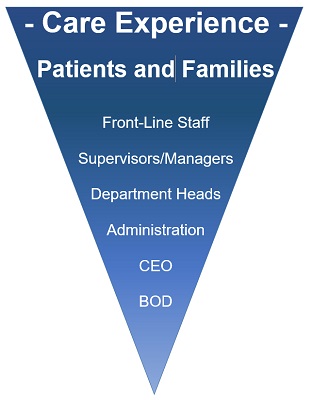
Reactive vs Proactive Leadership
I do a lot of reading on leadership. About 2 years ago, I read a book in which the author briefly contrasted reactive and proactive leaders. The author said that reactive leader does not seem to anticipate problems and does not see them coming until they are blowing up in his face. The reactive leader is constantly putting out fires. The proactive leader on the other hand sees problems just as they are starting to grow, or even before they begin, and calmly takes quiet and gentle steps to correct and avert so that the conflicts and disruptions are minimized or even completely prevented.
A reactive leader may be confronted with ugly contentions for any combination of the following reasons:
- Does not see the problem or consider that it might develop.
- Sees the potential problem, but does not want to be bothered over something that “might” happen.
- Sees the problem, but is afraid to act.
- Created the problem by misguided attempts to solve other problems.
- Enjoys contention and creates problems in part to create sparring opportunities or opportunities to assert dominance that are ego driven rather than leadership required.
The proactive leader does as Walter Gretzsky did and skates “to where the puck is going, not where it has been.” He has an eye to future disruptions. He sees the problems and is ready, willing and unafraid to act. He does not shy away from healthy conflict resolution, but prevents or minimizes unhealthy contention within his organization. He may disrupt his organization to move it where it needs to be to survive and thrive, but he will not allow his organization to be disrupted to no purpose.
I recently read an online article that presented reactive and proactive leaders as two equally valid leadership styles.i The reactive leader is presented in this article as strong in the surprise conflict, but weak in anticipatory leadership and the proactive leader as strong in long-range planning, but weak when called upon to “shoot from the hip.” I could not disagree more. A reactive leader is responding to whatever hits him and cannot have a firm hand on the tiller of the organization. For the proactive leader, the ability to extrapolate likely future scenarios and to predict human nature and act with vision and foresight does not make one unable to act upon the present urgencies and emergencies. Indeed, a proactive leader who has an eye to the future will be able to craft acute conflict resolution that is long lasting and strengthening to the organization.
Now, here is the part that stuns me, yet I have seen time and time to be true. This unknown author says that the reactive leader is often seen as the stronger leader, because he is often seen with guns blazing at a terrible dragon he is slaying for the organization, even if he is the one who fed and nurtured that dragon. The proactive leader is too often seen as weak or irrelevant. Why is he even needed? The organization seems to run itself. He often addresses problems discretely allowing key stakeholders to save face in front of the rest of the organization while bringing them effectively back on track. So much of what he does is unseen so it is assumed that it is not happening.
iPROACTIVE OR REACTIVE LEADERSHIP, WHICH IS MOST EFFECTIVE IN THE WORKPLACE? VICKY BAILEY, 2016-12-02
Connect with us on LinkedIn, join our Active Network Program and look at the other areas of connection we offer.



















